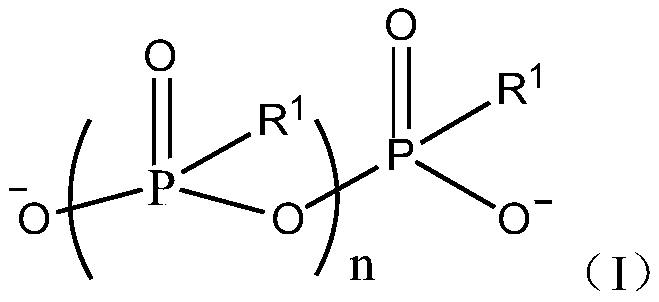Electrochemical device and electronic device including same
An electrochemical and content-based technology, applied in the field of energy storage, can solve problems such as the inability to take into account the electrochemical performance of electrochemical devices
- Summary
- Abstract
- Description
- Claims
- Application Information
AI Technical Summary
Problems solved by technology
Method used
Image
Examples
specific Embodiment
[0100] The preparation method and performance test method of the lithium-ion battery in the examples and comparative examples of the present application are described below.
[0101] (1) Preparation of lithium-ion batteries
[0102] (1) Preparation of electrolyte: In an argon atmosphere glove box with a water content 6 Dissolved in the above non-aqueous solvents, where LiPF 6 The content of 1mol / L, to obtain the basic electrolyte. Finally, as shown in the following Tables 1-8, a certain mass of additives was added to the basic electrolyte to prepare the electrolyte in the embodiment.
[0103] (2) Preparation of positive electrode: the positive electrode active material lithium cobaltate (LiCoO 2 ), the conductive agent acetylene black, and the binder polyvinylidene fluoride (PVDF) are fully stirred and mixed in an appropriate amount of N-methylpyrrolidone (NMP) solvent in a weight ratio of 96:2:2 to form a uniform positive electrode slurry Then, the positive electrode slurr...
Embodiment 1-19 and comparative example 1
[0124] The electrolytes and lithium-ion batteries of Examples 1-19 and Comparative Example 1 were prepared according to the above-mentioned preparation method, wherein Comparative Example 1 used the basic electrolyte, and Examples 1-19 were respectively added to the basic electrolyte as shown in Table 1. The components and contents are shown, wherein the content is the mass percentage of the component based on the total weight of the electrolyte, wherein the substances of formulas I-2, I-3, I-4, and I-7 are added in the form of lithium salts. In addition, Table 1 also shows the electrochemical test results of the lithium-ion batteries in Examples 1-19 and Comparative Example 1.
[0125] Table 1
[0126]
[0127]
[0128] Referring to the electrochemical test results in Table 1, it can be seen that compared with Comparative Example 1, the electrolyte in Examples 1-19 of the present application has a certain content of the anion of formula I described in the present applic...
Embodiment 5 and Embodiment 20-26
[0132] Embodiments 20-26 are improvements made on the basis of Embodiment 5. Specifically, in Examples 20-26, fluorocarbonate is further added to the electrolyte described in Example 5, wherein the specific components and contents added and the performance test results of the obtained lithium-ion battery are shown in the following table 2.
[0133] Table 2
[0134]
[0135] Referring to the electrochemical test results in Table 2, it can be seen that, compared with Example 5, the electrolytic solution in Examples 20-26 of the present application has a certain content of fluorocarbonate, and the corresponding electrochemical device obtained at a low temperature Both the discharge performance at low temperature and the cycle stability at room temperature have been improved to a certain extent. This is because the anion represented by formula I and the fluorocarbonate work together to make the electrolyte have a high reduction potential, which can form an SEI film on the sur...
PUM
 Login to View More
Login to View More Abstract
Description
Claims
Application Information
 Login to View More
Login to View More - R&D
- Intellectual Property
- Life Sciences
- Materials
- Tech Scout
- Unparalleled Data Quality
- Higher Quality Content
- 60% Fewer Hallucinations
Browse by: Latest US Patents, China's latest patents, Technical Efficacy Thesaurus, Application Domain, Technology Topic, Popular Technical Reports.
© 2025 PatSnap. All rights reserved.Legal|Privacy policy|Modern Slavery Act Transparency Statement|Sitemap|About US| Contact US: help@patsnap.com



